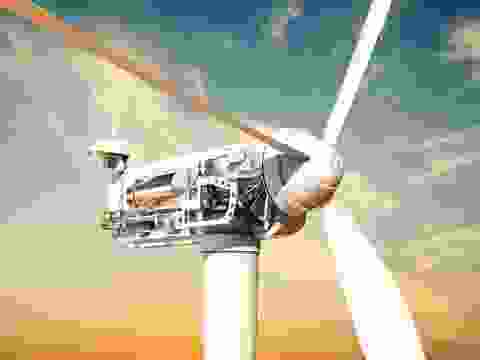Australia's Antarctic Territory Claim
Critical minerals, policy, and the energy transition
The Energy Transition in Australia's Antarctic Territory Claim
The Australian Antarctic Territory, the largest territorial claim on the continent, holds a significant role in the evolving dynamics of geopolitics, scientific research, and environmental stewardship in Antarctica. As global demand grows for critical minerals essential to the energy transition—such as those used in wind turbines, solar panels, and electric vehicles—the region’s long-term strategic relevance is receiving renewed attention. Governed under the Antarctic Treaty System, including the 1959 Antarctic Treaty and the Madrid Protocol, which prohibits commercial mineral resource activities, Australia champions strong environmental protections and peaceful scientific collaboration. Nevertheless, increasing interest in mineral security and supply chain resilience is testing the durability of the treaty framework. Australia’s extensive scientific infrastructure and sustained presence in the region reflects its commitment to environmental leadership and responsible governance yet concerns persist over future geopolitical pressures and the possibility of treaty reinterpretation. The Australian Antarctic Territory is increasingly shaped by the overlapping pressures of climate research, critical mineral considerations, and international regulatory frameworks, reflecting the ongoing challenge of aligning national priorities with collective environmental responsibilities in the context of the energy transition.
Australia’s Antarctic Territory in a Contested Frontier
Australia claims the largest national sector of Antarctica, nearly 5.9 million square kilometres, or 42% of the continent. This immense, frozen expanse is not only a cornerstone of Australia’s national identity but also central to its scientific leadership and long-term strategic interests. As climate change reshapes the polar environment and geopolitical competition intensifies, Australia faces growing pressure to uphold its claim, maintain a robust presence, and defend the cooperative governance model enshrined in the Antarctic Treaty System (ATS).
Australia's Antarctic claim has deep historical roots. It was formalised through the 1933 Order in Council, which transferred jurisdiction from the United Kingdom to the Commonwealth of Australia, and builds upon exploration milestones such as Douglas Mawson’s 1911–14 Australasian Antarctic Expedition. Australia played a key role in the 1959 Antarctic Treaty negotiations, helping shape Article IV, which preserved existing claims while freezing the assertion of new ones.
The Australian Antarctic Territory (AAT) is governed through a dual framework. Domestically, it is managed by the Department of Climate Change, Energy, the Environment and Water, through the Australian Antarctic Division (AAD), which oversees logistics, science, and environmental compliance. Internationally, it falls under the ATS and the Madrid Protocol, which prohibits mineral resource exploitation. Australia maintains four year-round research stations, including sub-Antarctic Macquarie Island, supported by seasonal field camps and traverse capabilities.
Although the AAT is largely free from formal sovereignty disputes, it lies at the centre of growing global interest. Non-claimant states such as China have significantly expanded their operations, now running five research stations—most notably Qinnghe Station, located within Australia’s claimed territory. China’s polar fleet and logistics capabilities enable a wide operational footprint. While Beijing frames its activities as scientific cooperation, Western analysts increasingly interpret them as part of a dual-use strategy combining research with strategic positioning. Interests in fisheries, shipping routes, and potential future resources have led to questions about China’s long-term Antarctic intentions.
Australia also faces pressure from adjacent activity. Chinese and Russian fishing fleets have increased their presence near Australia’s Southern Ocean sector, raising biosecurity and sustainability concerns. Meanwhile, in the Ross Dependency just east of the AAT, the proximity of New Zealand’s Scott Base to the US-operated McMurdo Station, a hub supporting over 1,200 personnel.
In response, Australia is strengthening its capabilities through a comprehensive Antarctic Strategy. The 2022 Strategy Update commits $804 million over ten years to upgrade infrastructure, establish inland traverse routes, and enhance aviation capabilities. Central to this is the $1.9 billion RSV Nuyina icebreaker, commissioned in 2021, which provides year-round access to deep-field sites and remote stations. Australia is also expanding surveillance via the AI-enabled Sentinel network and satellite monitoring through partnerships with the European Space Agency.
Australia’s Antarctic approach is built around three strategic pillars: maintaining territorial integrity, exercising leadership within the ATS, and championing environmental stewardship. It has chaired a quarter of all ATS committees since 1990 and hosted the original 1961 Treaty meeting. Symbolic efforts, such as the 2024 centenary restoration of Mawson’s Huts, reinforce its historical legitimacy, while diplomacy focuses on upholding consensus governance and resisting encroachment on its claim.
Scientific research remains the bedrock of Australia’s Antarctic presence. The Million Year Ice Core Project, which aims to extract climate data from 3,000-metre-deep ice, highlights Australia’s leadership in cryosphere science. Ongoing studies at Davis and Casey stations support long-term ecological monitoring, such as a 45-year penguin population survey informing fisheries management under CCAMLR. Atmospheric research also explores connections between Antarctic ozone recovery and weather patterns in Australia.
These programmes are supported by a wide network of collaborations. Australia is a leading member of the Scientific Committee on Antarctic Research (SCAR), co-leads the Japan–Australia East Antarctic Monitoring Programme, and partners with industry, such as BHP-backed research into deep-sea carbon sequestration. The AAD coordinates over 100 scientific projects each year across these domains.
Environmental protection is integral to Australia’s Antarctic presence. It has proposed three marine protected areas (MPAs) in East Antarctica, totalling 1.8 million square kilometres. Mandatory biosecurity measures for vessels have been in place since 2020, and efforts to reduce the carbon footprint of research operations are advancing. Mawson Station now generates 70% of its power from wind turbines.
Yet major challenges persist. For example, Russia’s 2024 Antarctic policy invoked historical exploration rights, and has included seismic surveys in waters near Australia’s claimed territory. China’s infrastructure expansion, including its fifth station at Inexpressible Island, has raised diplomatic concerns despite China’s non-claimant status. Illegal, unreported, and unregulated (IUU) fishing remains a serious threat, with estimated annual losses of 30,000 tonnes in Australia’s Southern Ocean sector.
Climate change is both a research focus and a threat to operational continuity. The Denman Glacier, retreating at 5 km per year since 2020, is one of the fastest-moving glaciers in East Antarctica and poses major sea-level rise implications. Australia’s response includes the $50 million Denman Research Initiative, which deploys autonomous underwater vehicles to study glacial dynamics and ocean-ice interactions in real time.
Looking ahead, Australia is pursuing a forward-leaning Antarctic policy across three core areas: scientific leadership, logistical innovation, and treaty reform. By 2027, hydrogen-powered traverse vehicles are expected to be deployed, and construction is planned for the Princess Elizabeth Aerodrome, which would become the first paved runway on the continent. Policy proposals under review include introducing weighted voting within the ATS and establishing liability regimes for environmental damage.
Emerging policy debates include reinforcing sovereignty through legislative means such as asserting jurisdiction over the AAT’s exclusive economic zone, integrating Indigenous knowledge into climate research (particularly ice core interpretation), and regulating new frontiers including bioprospecting and satellite launch activities.


Source: SFA (Oxford)





Meet the Critical Minerals team
Trusted advice from a dedicated team of experts.

Henk de Hoop
Chief Executive Officer

Beresford Clarke
Managing Director: Technical & Research

Jamie Underwood
Principal Consultant

Ismet Soyocak
ESG & Critical Minerals Lead

Rj Coetzee
Senior Market Analyst: Battery Materials and Technologies

How can we help you?
SFA (Oxford) provides bespoke, independent intelligence on the strategic metal markets, specifically tailored to your needs. To find out more about what we can offer you, please contact us.